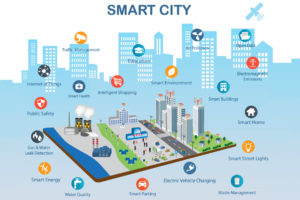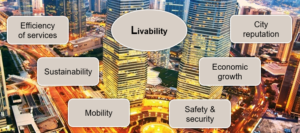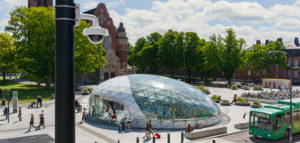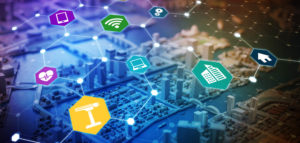“What is a smart city?”
Despite the global smart city hype, with daily headlines about new smart city projects, cities competing to be the smartest and governments around the world investing billions in smart cities, I frequently hear someone say “But what is a smart city?”.
Today, many of us turn to Google to find quick answers, and when googling this specific question, one of the first results is from Wikipedia, which currently summarizes a smart city as “A smart city is an urban area that uses different types of electronic data collection sensors to supply information which is used to manage assets and resources efficiently.”
Another online dictionary defines a smart city as “A developed urban area that creates sustainable economic development and high quality of life by excelling in multiple key areas; economy, mobility, environment, people, living, and government.”
There are a wide range of definitions for “what makes a smart city”. As the diagram below shows, there are a lot of potential factors that can contribute to a city being considered “smart” and the below list is not exhaustive, a little searching online and you will find several similar diagrams each with a slight tweak on the smart city ecosystem.

Source: ADTELL Integration
No universal definition
India is one of the countries that has taken a national approach to smart cities. The government in India has chosen a humble, objective approach when answering this delicate question by stating “The answer is, there is no universally accepted definition of a smart city. It means different things to different people. The conceptualization of Smart City, therefore, varies from city to city and country to country, depending on the level of development, willingness to change and reform, resources and aspirations of the city residents.” (Source: Smart Cities Mission)
Is the answer in the objectives?
To make this topic more tangible, I prefer to focus on some of the key objectives that most smart city projects are designed to achieve. I initiated this approach about a year ago, when I was asked to talk about smart cities to system integrators and city representatives in Glasgow, Scotland. Based on their response, I have continued to share this objective-based explanation of a smart city with city officials, journalists, technology partners and colleagues around the world. Often with the same result – “Now it makes more sense to me.”
Six key smart city objectives – and one major
So instead of talking about smart parking, smart healthcare, smart agriculture, smart transportation, smart government, smart energy or smart this or that, one can look at how smart city initiatives are initiated to achieve one or more of the following objectives:
- Efficiency of services – to optimize the use of public resources and provide a high level of citizen service.
- Sustainability – to grow & develop the city with strong consideration to environmental impact.
- Mobility – to make it easy for citizens, workers and visitors to move around in the city, whether by foot, bike, car, public transport etc. (regardless of transportation means).
- Safety & security – to improve public safety & security in every-day life and at special events, as well as being best possibly prepared for emergencies and disasters.
- Economic growth – to attract businesses, investors, citizens and visitors.
- City reputation – to constantly improve the city’s image & reputation.
Successful smart city projects, regardless of their core objectives, will help cities get closer to their ultimate goal to improve the overall quality of life, or in smart city terms, “Livability”.

Six key smart city objectives to make cities more livable
Technology cornerstones of a smart city
Smart city projects also share three common technology cornerstones – IoT sensors, connectivity, and data. The sensors are represented by any connected device that supply information to the network, connectivity is provided by fixed or wireless networks, and data represent the storage, analysis and presentation of real-time and historical data. By connecting these three cornerstones, cities are provided with a powerful platform for new and more efficient ways of creating more livable cities. This is well demonstrated by the following smart city use cases:
- Smart waste management. The garbage containers are equipped with sensors, letting the collection company know how full they are. The collection routes are automatically optimized based on actual needs.
- Smart parking solutions, where sensors keep track of available parking lots. Available parking possibilities are presented to drivers, either via digital signs along the roads, or via mobile apps, so that they easily can find and navigate to the best parking option.
- Smart building automation systems, that e.g. automatically adapt heating and ventilation to the level of occupancy and ensure that lights are turned off when no one is in the room.
- Smart public safety & security solutions, where various sensors and connected cameras enable law enforcement and other first responders to efficiently react to, respond to and solve incidents and emergencies.
It’s all about livability
Each of these use cases addresses more than one of the six key smart city objectives listed above, and are based on different combinations of sensors, connectivity and data. And next time you hear about a smart city project, it can be helpful to ask yourself which of the six key smart city objectives the project addresses and how it uses sensors, connectivity and data to improve the overall quality-of-life – or livability – in the city. If you do this, it is likely that you soon will be much closer to having an answer to what the heck a smart city really is.
Read more about Smart cities




